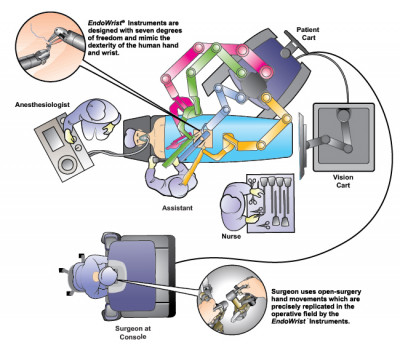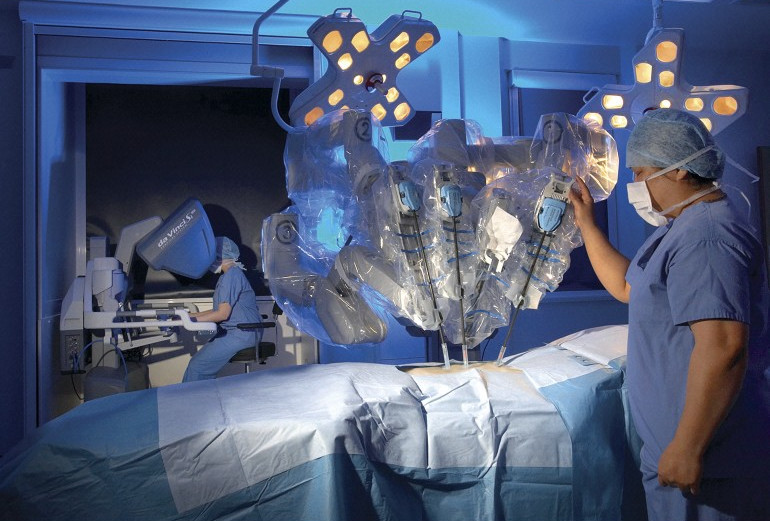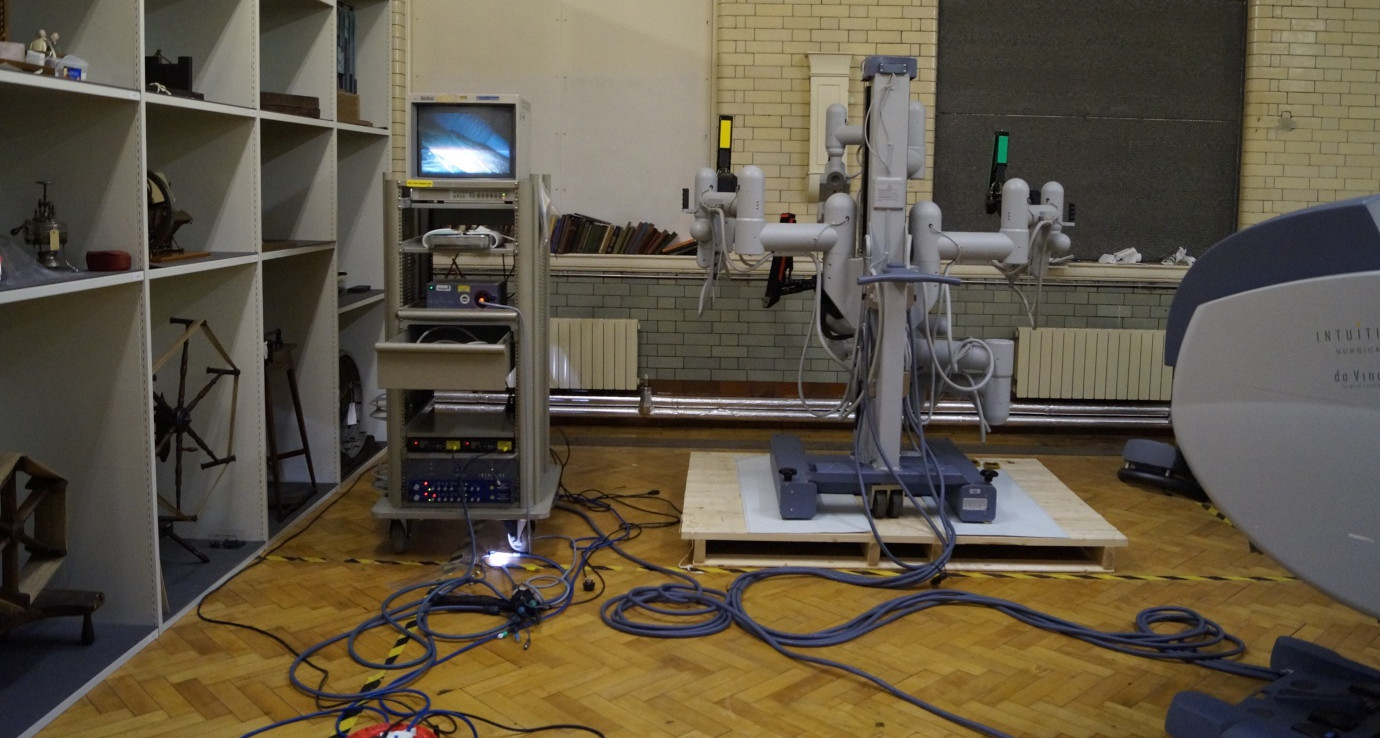On Friday 10 March, the Science Museum is hosting a remarkable event – Guardian Live: Robot Surgery. Medicine Gallery Curator Selina Hurley looks at the incredible machine that will be performing the procedure, the da Vinci Classic robotic surgery system.
Lord Ara Darzi and his team used this system in 2000 to perform the first surgical procedure using a da Vinci machine in the UK. Guardian Live: Robot Surgery, will be hosted by Professor Roger Kneebone, a long-time friend of the Science Museum and well known for his surgical simulations. Lord Ara Darzi, Shirley Martin, Robotics Specialist Nurse and Helgi Johannsson, Anaesthetist will come together to re-enact the first surgical case, a gallbladder removal.
For medical robotics fans, (it can’t just be me), the da Vinci needs no introduction. Da Vinci has almost become synonymous with robotic surgery, being a market leader in the last 20 years. Since the da Vinci system launched in 1999, there have been constant improvements with the newest system, the Xi, launching in 2014. As of 30 September 2016, there were 3,803 da Vincis installed worldwide.
The system takes its name from the artist, Leonardo da Vinci, inspired by his study of human anatomy and his development of automatons and robots.

While operating, surgeons sit at the console, in another part of the operating theatre. Looking through two eyeholes the surgeon sees a 3D image of the inside of the body, provided by an endoscopic camera on one of the arms of the patient cart. The console reminds me of a gaming station with hand shaped joysticks and foot pedals. The pedals operate energy supplied to the instruments and move the endoscopic camera in or out bringing the surgical image closer or further away.
The surgeon’s hand movements at a console are translated into smaller, precise movements of tiny instruments, attached to the arms of the patient cart. Each of the specially designed instruments has seven degrees of movement – your wrist has just three. The system also helps reduce the impact of the natural tremor of a surgeon’s hand.
Watching such a massive machine produce such delicate and almost balletic movements is truly a remarkable sight.

Sparked by visits to robotic surgery centres, a da Vinci system has been on my curatorial wish list for quite some time. The challenge is acquiring these systems due to their high costs. Happily, an opportunity presented itself while I was researching possible futures of surgery for the new Medicine Galleries in 2019. Lord Darzi kindly offered to donate the system to the Science Museum last summer, and since then it has been residing in our object stores. After its clinical life was over, this da Vinci, became a research tool at the Surgical Innovation Centre in St Mary’s.
Both the US and UK have strong traditions in the application of robotics to surgery. The idea for a robotic assisted keyhole surgery developed out of an attempt to bring surgery ever closer to the front line of battle and to astronauts in space. While this has not yet been realised, its application in the civilian sphere is ever growing.
That’s not to say that surgeons are not performing surgery at a distance. Using a Zeus robot, the first transatlantic surgery was performed on 7 September 2001. Known as “Operation Lindbergh” the surgeons in New York performed a gallbladder removal on a person in Strasbourg.
Personally and professionally, the Guardian Live: Robot Surgery, will be a highlight, hearing about a recent historical event first hand, with the actual robot in the room. This will be the da Vinci’s first outing event since its acquisition. The event on 10 March would not be possible without the kind support of Lord Darzi and Professor Kneebone and their teams at Imperial College and Intuitive Surgical.
See the da Vinci Surgical System in action at Guardian Live: Robot Surgery, after-hours at the Science Museum on Friday 10 March.
